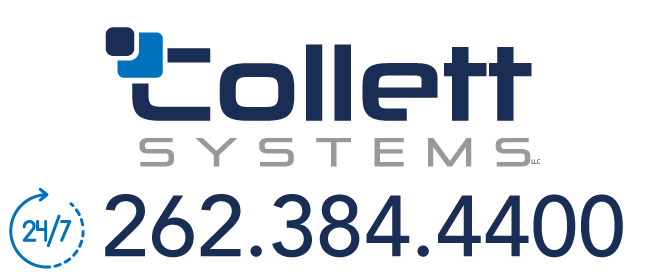If you own a small or medium-sized business, and you were looking into a way to improve your firm from a technological standpoint, your research may have led you to hyperconvergence. Hyperconvergence started getting quite a bit of attention recently, as it is a simple solution, it is easy to use and it comes with great features and even better benefits.
Now, if you don’t know what it is or what it means, you have come to the right place, and we can and will tell you all you need to know about it. Let’s start simply by answering the question of what hyperconvergence is.
What is hyperconvergence?
Hyperconvergence (HCI) is a tech solution for businesses that combines compute, storage, and networking into a single system. It is an IT framework that is used to reduce the complexity of data centres, increase scalability, and more. It includes a hypervisor for virtualized computing, software-defined storage, as well as virtualized networking.
Usually, HCI runs on standard, off-the-shelf servers. It can even be upgraded by adding extra nodes and creating clusters, which be upgraded even further into pools of shared storage and compute resources. This makes consumption very convenient, which is what makes it so popular and useful in countless businesses among countless industries.
It comes as a major improvement over traditional converged infrastructure. As you may know, in a traditional IT environment, all of the elements such as networking, servers, and storage hardware needed to be acquired separately. Then, you needed to configure it all and make it work together as part of a single, cohesive system.
Then came the converged systems — which were an improvement at the time — and they consisted of pre-built ‘stacks’ of hardware that would work straight out of the box. This solution even had advanced tech support and management tools. However, like every other technology, it got outdated when a new solution was invented, and that new solution is hyperconverged infrastructure.
Why is the hyperconverged infrastructure better?
There are quite a few reasons that make the hyperconverged infrastructure stand out. One of its biggest strengths is the fact that it packs the entire stack into a single box, configuring everything, and allowing you to manage it all through a single interface. This is already an improvement over converged systems, not to mention the benefits when compared to the original design.
Apart from being easier to use and set up, it is also more affordable. And, as mentioned, you can simply keep adding them up as per need, so you don’t have to reorganize the entire systems as your business continues to grow and expand.
Basically, it embodies an entirely new approach to data centres. It does not require SAN (Storage Area Network) at all, while other aspects — including server, storage, and hypervisor — are no longer separate features, but a single package — an appliance called a node.
Usually, it includes both, SSD and HDD, although this may differ, depending on the developer you choose. Thanks to all of this, it is often described as a software-defined data centre, or SDDC.
Features and benefits of hyperconvergence
As explained above, hyperconvergence comes with a number of benefits and features, and very few downsides, at least at this point in time. In the future, an even more efficient and beneficial system might be invented, but for now, hyperconvergence is pretty much the best you can acquire.
Here is what it has to offer:
Software-defined storage
We mentioned already that storage in hyperconverged infrastructure is software-defined, or software-based. What that means is that storage nodes perform as a single pool of storage — one that is highly reliable and efficient. If you happen to have multiple nodes connected, the network that you have created will not only be highly-efficient, but it will also continue to function, even if one of the nodes goes down.
This is a resilience that is unique to this system, and it serves as a guarantee of uptime and connectivity.
Scalability
Next, we have scalability, which once again goes back to the node-based infrastructure of the system. As mentioned several times already, it is very easy to simply scale up your data centre simply by adding new nodes as your business continues to grow.
New nodes can be added, removed, replaced, or changed in any way, depending on the situation. That way, you do not have to make major changes to your datacenter, you do not need to take the entire system offline for hours, and alike. Simply connect the new box to it, and that’s it.
Increased agility
Thanks to hyperconvergence, all of your workloads will fall under the same administrative umbrella. As you can imagine, this makes migration of workloads rather simple and efficient, and you can change their location without difficulties.
Cost efficiency
The cost-efficiency of this solution is also one of the benefits, which is important for any business, big or small. Everyone has the goal to save as much as possible, but small businesses often cannot afford things that big businesses can. With hyperconvergence, you get a very affordable economic model for your IT department.
The amount of equipment that you have to purchase is significantly reduced, and the same is true when it comes to maintenance, support, and alike. Simply put, it will be cheaper to work with hyperconverged infrastructure than with any older solution that you can choose.
Better data protection
Another great benefit of HCI is that it provides your organization with better data protection. As we said earlier, if one node fails, the rest will share the workload amongst themselves, so your data will not be lost, and your datacenter will remain online.
Further, you will easily be able to restore the data, which is also extremely important considering the fact that hardware failure is far from being the only threat. The internet is full of cybercriminals — hackers who might target your business for whatever reason. This is where HCI truly gets to shine, as it embeds elements of disaster recovery and backups, which is crucial for keeping your business afloat after a cybersecurity incident.
Update convenience
Another thing to keep in mind is that it is very easy and efficient to perform updates when your management software is adaptable and flexible. New patches and other software improvements are easier than ever.
The same is true for tweaking certain aspects, such as storage, cloud, backup, database settings, and more. In other words, you will not only save money by implementing this solution but also time and effort.
Use cases of hyperconvergence
Next, let’s talk about different use cases of hyperconvergence. The obvious one is data centre consolidation. Basically, SAN is entirely gone, and it is not the only thing that you get to eliminate. With it, you also eliminate storage controllers and pretty much the entire storage array. Instead, you have the compact hyperconverged appliance, which makes this solution your best option if you are after data consolidation.
Next, we have easier testing and development, as hyperconvergence makes it very easy to make logical separations for the development and testing environment. The benefits of this are clear — your development team will not end up creating a shadow IT environment within a public cloud. Instead, it will use the best and most advanced modern equipment for development purposes.
Finally, another big advantage of hyperconvergence is remote management. This can be highly beneficial if your team does not operate from the same location. Such situations are all too often these days, which often led to data centre management becoming a major challenge for businesses. Fortunately, with HCI, the data centre can be managed remotely in its entirety.
Once again, this technology increases convenience and efficiency, giving your team certain freedoms and benefits, such as greater flexibility. It is significantly better than needing them on location at all times.
Potential drawbacks
While hyperconvergence does come with a number of benefits and improvements over older data centre designs, it is worth noting that it also has a few drawbacks.
These are not serious, major issues, but they are something that you should be aware of, for the sake of your business and its future. One such potential problem is the fact that it unifies the data centre under one, single vendor. Further, while you can increase computing power and storage by adding new units, it is worth remembering that it scales linearly.
What this means is that adding new power or storage requires equal investment into both aspects. Further, data is also copied in a triple, which is a great thing for security, but that also means that it needs to cross the network three times.
Obviously, these are not deal-breaking issues for most businesses, and suffering them is more than worth it when you compare it to benefits. However, they are something that you should keep in mind if you plan to switch to HCI. Of course, technology is always changing and evolving, and new solutions are likely to emerge in time. Whether that means improvements to hyperconvergence, or entirely new designs — remains to be seen.
Still, we remain confident that HCI is currently the best option for pretty much everyone, and that you should definitely take it into consideration.
If you have needs that might fit this infrastructure solution, use the form to the right and get in touch!


